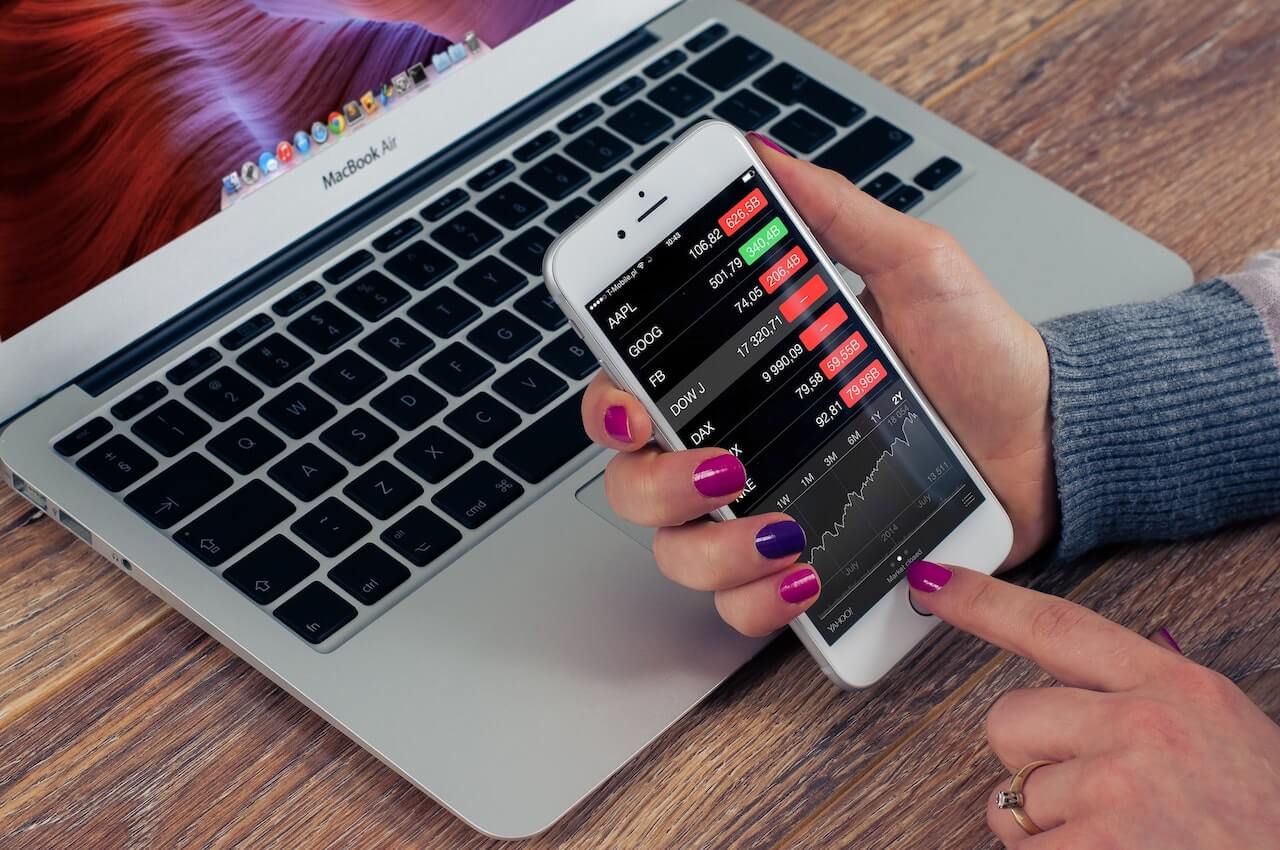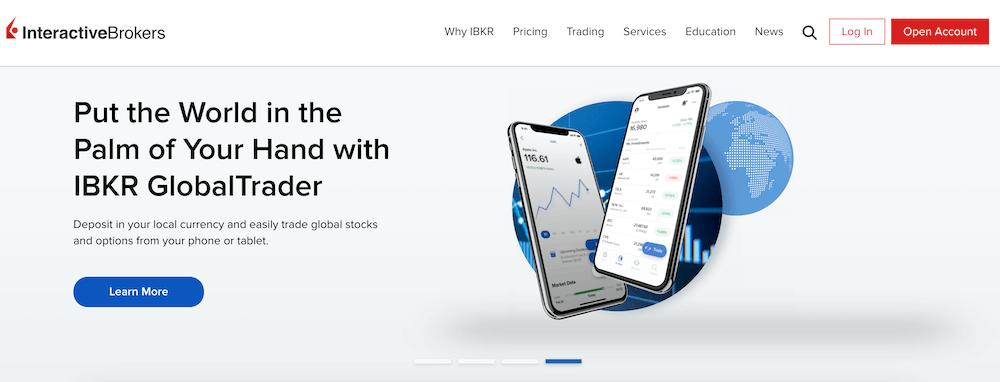Now Reading: How To Invest in ETFs: A Beginner’s Guide
- 01
How To Invest in ETFs: A Beginner’s Guide
How To Invest in ETFs: A Beginner’s Guide

As a beginner, starting to invest in stocks was a daunting task for me. I had always been interested in investing, but I was intimidated by the complexity of the stock market and afraid of making costly mistakes. Despite my fears, I knew that I had to take the leap and start learning if I ever wanted to reach my financial goals. With each new investment, I learned and grew. I made mistakes, but I also had successes. And as my portfolio started to grow, I felt more confident in my investment decisions.
Now, years later, I can say that investing in the stock market has been one of the best financial decisions I have ever made. The idea of trading in the stock market can be intimidating, especially if you’re a beginner investor. There are so many investment options to choose from, and this alone can put you off. A good place to start is Exchange-Traded Funds (ETFs).
Instead of focusing on individual stocks, ETFs give you exposure to the overall stock market. ETFs are cheap and low-risk, making them a good option for beginner investors. So, let’s talk about what an ETF is, its risks and benefits, and how to invest in ETFs.
What Does ETF Mean?
An Exchange-Traded Fund or ETF is an investment fund that holds a basket of securities, such as stocks, bonds, commodities, equities, etc., and trades on exchanges like stocks. That means, when you invest in one ETF, you can be exposed to a variety of assets held by the ETF – which can be hundreds.
Characteristics of ETFs
ETFs, just like stocks, are traded on the stock exchange, and their prices fluctuate in real-time, based on supply and demand. However, they do not grant the investor shareholder rights in the same manner as traditional investing. For example, stock ETFs can pay dividends but won’t grant investors voting rights.
Another important characteristic of ETFs is that they track an index passively, such as NASDAQ Composite or S&P 500. So, instead of a manager using their best judgment to choose specific securities to buy and sell, they attempt to replicate the performance of a certain index.
An ETF might do this by tracking a specific index (like NASDAQ) and holding a basket of securities from that index. It can also track an industry like agriculture by investing in stocks from a range of companies within that sector. Indexes may be based on currencies, stocks, commodities, or bonds.
There are also active ETFs available with holdings selected by a professional portfolio/fund manager or team of managers. Typically, active ETFs have higher expense ratios (annual fees).
Each ETF also comes with a unique sticker to identify it, just like stocks.
Are ETFs a Good Investment?
The best part about ETFs is that they are not time-consuming, meaning you don’t need to invest your time monitoring their performance daily. Moreover, you don’t need to be knowledgeable or particularly interested in financial topics to invest in ETFs.
Since they hold hundreds or even thousands of stocks in a single fund, they spread your risk to protect you from overexposure when a company goes bust. In addition, ETFs are generally cheaper than actively managed funds, meaning you won’t require large capital to get started.
ETFs Risks and Benefits
Before you invest in any asset, compare the risks and benefits. This will help you make sound financial decisions about the type of investment you’re interested in.
Pros of investing in ETFs
- Diversification. Since ETFs give you exposure to a wide variety of securities or assets, they reduce the risk of putting “all your eggs in one basket.”
- Many ETFs are passively managed, which means, as an investor, you’ll pay lower fees than if you were investing in an actively managed fund. This is because ETFs take less work, hence making them cheaper.
- Convenience. ETFs are listed on exchanges and can be bought and sold throughout the trading day. This gives you easier flexibility in various asset classes and investment strategies.
- Transparency. Issuers are required to produce a fact sheet for their ETFs stating what investors are being exposed to and how the Net Asset Value of the ETF is calculated. Tracking performance is also published.
- Tax efficiency. ETFs generate fewer capital gains making them more tax efficient than mutual funds. It means an investor gets to keep more of the potential profits from the investment.
- Liquidity. ETFs offer you the same liquidity you get with stocks. That is, you can buy or sell an ETF quickly and at a low cost on the stock exchange. However, not all ETFs offer the same level of liquidity.
Cons of investing in ETFs
- Lack of liquidity. If an ETF is thinly traded, an investor may have difficulties selling. An illiquid investment is when there’s a large spread between the bid (what you pay) and ask (the price it can be sold for).
- Lower dividend yield. While ETFs have lower risks, they also have lower dividend yields compared to individual stocks.
- Operating expenses. ETFs are cheaper than mutual funds. However, fund managers still incur expenses as part of normal business operations and pass these expenses to investors.
How to Trade ETFs
To get started on ETF investing, follow these simple steps:
Choosing the best broker to invest in ETF
The first step is to set up an online account through a broker or trading platform. Many brokerage accounts don’t attract minimum fees, transaction fees, or inactivity fees. Opening a brokerage account is straightforward and, in many ways, similar to opening a bank account.
Opening a brokerage account allows you to screen specific ETFs and invest in those that interest you. Here I advise you to consider a broker that offers an extensive range of educational resources and the one I use for my portfolio growth, such as Interactive Broker.
How to open Interactive Brokers account:

- Go to the Interactive Brokers website and click on the “Open an Account” button.
- Choose your Interactive Brokers account type. It offers several different types of accounts, including individual, joint, and corporate accounts.
- Fill out the application form. You’ll be asked to provide some basic personal information, such as your name, address, and date of birth. You’ll also need to create a username and password.
- Provide identification. Interactive Brokers requires you to provide two forms of identification, such as a driver’s license and a passport or a government-issued ID.
- Fund your account. Once you’ve completed the application form, you’ll need to fund your account in order to start trading. You can do this via bank transfer, wire transfer, or by using credit or debit card.
- Complete the account verification process. Interactive Brokers will verify your identity and check that the information you’ve provided is accurate. This process can take a few days.
- Start trading. Once your account has been verified, you’ll be able to start trading. You can access your account through the Interactive Brokers website or by using the mobile app.
Use my link to open an account with Interactive Brokers and get a chance to earn $1000 of IBKR Stock!
If you don’t have the time or prefer someone else to do the investing for you, consider opening an account with a robo-advisor. Robo-advisors build and manage an investment portfolio on your behalf for a low annual fee (usually around 0.25% of your account balance). The advantage of using robo-advisors is that they pick investments for you, simplifying your work.
Research and find ETFs
For a beginner, passive ETFs are the best options because they are cheaper than actively managed funds. Plus, most actively managed funds don’t beat their benchmark index over time.
In addition, you want to factor in issues like risks and fees associated with the investment. You can find this information on the ETF prospectus, a legal document with comprehensive details about the ETF.
The document contains information like the countries and industries in which it may be invested and the management team and investment advisor in charge of managing the fund. The prospectus also shares details about the rules the ETF must follow and your rights as an investor who owns part of the ETF.
Analyze an ETF on your own
Finding the right ETF will probably be the most challenging part of ETF investing. There are thousands of ETFs to choose from. That’s why screening tools can be handy in helping you narrow down your search. With these tools, you can filter your asset type based on trading performance, industry, type, geography, or fund provider.
Your first option might be to go with the best-performing broad index ETFs. However, you can also analyze other ETFs on your own and select ones that suit your budget and investment needs.
How to analyze ETFs?
There are a few things you’ll need to look at when analyzing ETFs. These include:
- Expense ratios. These are the administrative expenses from your ETF investment. Keep in mind that they will affect your profit margin, so the lower, the better.
- Volume. This is the number of shares traded over a given time period. High volumes indicate the fund’s popularity.
- Commissions. ETFs attract fees whenever you buy or sell them. The good news is that commissions no longer exist at most major online brokers nowadays. However, it’s wise to check before you invest.
- Holdings. This indicates the individual companies the fund invests in.
- Trading prices. This indicates the current prices of the ETFs. The price will dictate how many shares you can afford to buy.
- Performance. You want to analyze a fund’s performance history carefully, like within the last five years, to establish how it has performed historically. While this may not necessarily indicate how it will perform in the future, you’ll know the kind of company you’re investing in.
Now, once you’ve identified and analyzed ETFs, you can narrow your options further by defining your investment goals. For example, how soon will you need the money you plan to invest? Do you want to invest in companies with specific characteristics?
After you set up your account and have selected your ETFs, it’s time to place an order. Simply find the ETF ticker and select buy. You can then monitor the performance of your ETFs to ensure they meet your investment objectives.
Build an investment portfolio according to the investor’s risk profile
It’s important to remember that any type of investment involves some level of risk. While it’s crucial to understand the past performance of an investment, it doesn’t guarantee future results.
That said, it’s smart to build an investment portfolio based on the investor’s risk profile. Here’s what experts recommend:
- Risk tolerance. You must assess the investor’s risk tolerance to determine how much risk you’re willing to take to achieve their investment goals. Some of the things that can help you determine an individual’s risk tolerance include age, income, time horizon, and investment goals.
- Asset allocation. This refers to how an investment portfolio is split among different types of assets. The investor’s target asset allocation will primarily determine the investment return and volatility rate. Investing in different asset classes and sectors, and geographic regions helps diversify the investment portfolio.
- Rebalancing the portfolio. Over time, the investor’s asset allocation may fall out of line, resulting in an imbalance. Rebalancing helps restore the investment portfolio to its desired allocation.
- Regular monitoring and reviewing of the investment portfolio. It’s important to ensure that the portfolio is aligned with the investor’s goals and risk tolerance. This means making necessary adjustments to the portfolio as the investor’s risk tolerance changes.
Closing Thoughts
Investing in ETFs is one of the easiest ways to get exposure in the exchange market. ETFs are low-risk and cheaper, plus, you don’t have to learn all the ropes involved in stock trading. Moreover, you can open a brokerage account with Interactive Broker just as I did, and feel confident about choosing the best ETFs for your portfolio.
Tetiana is a business coach and owner of IStartHub, a business media for ambitious female entrepreneurs and small business owners.














